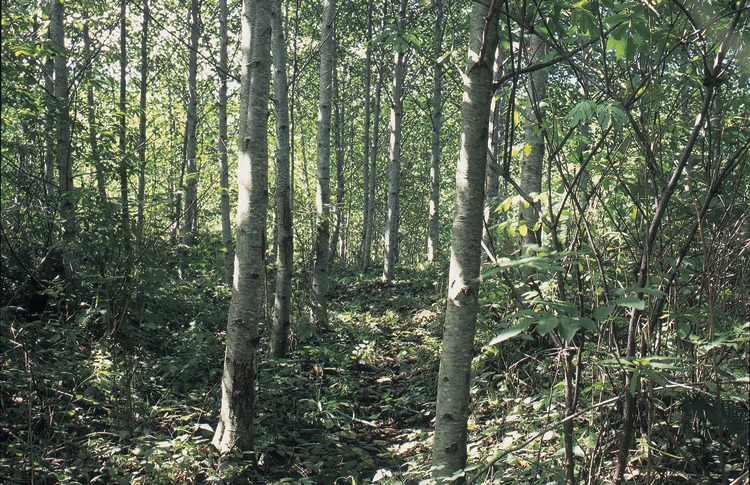

|
Alder Story |

Our Alder products are made from Alder certified to the international standard Programme for the Endorsement of Forest Certification (PEFC™). For more information on the PEFC program, please visit www.pefc.org.
Alder is a species native to the Pacific Northwest. It grows in an approximate 125 mile-wide strip along the West Coast that stretches from Alaska to Northern California. The largest concentration of Alder stands just north of Portland, Oregon.
Alder regenerates naturally and prolifically and flourishes in areas where other species might not survive. Its unique nitrogen-fixing properties enrich root systems, add nutrients to the soil and assist neighboring plants to establish and thrive. Also, since Alder develops so quickly, it helps prevent soil erosion and provides protection to more delicate and slow-growing species such as Douglas Fir, Cedar and Hemlock. Case in point: after the 1980 eruption of Mount St. Helens, Alder was the first major tree to take root in the ash-buried landscape. Because of Alder’s extraordinary properties, additional vegetation grew that became food and shelter for elk and other animals.
The amazing Alder is capable of growing to a height of 30 feet in five years. In 20 years it reaches a mature height of 80 feet which means it takes only a short amount of time to create an Alder forest. Like all other trees, Alder extracts carbon dioxide (CO2) from the atmosphere and through the process of photosynthesis, uses the carbon it needs to grow and stores the rest in its wood fibers. It then releases oxygen (O2) back into the environment, enriching the air we breathe. When a tree dies, it deteriorates and releases the carbon back into the air. But when a tree is harvested and manufactured into furniture, cabinetry or millwork, the carbon remains sequestered for the life of the product.